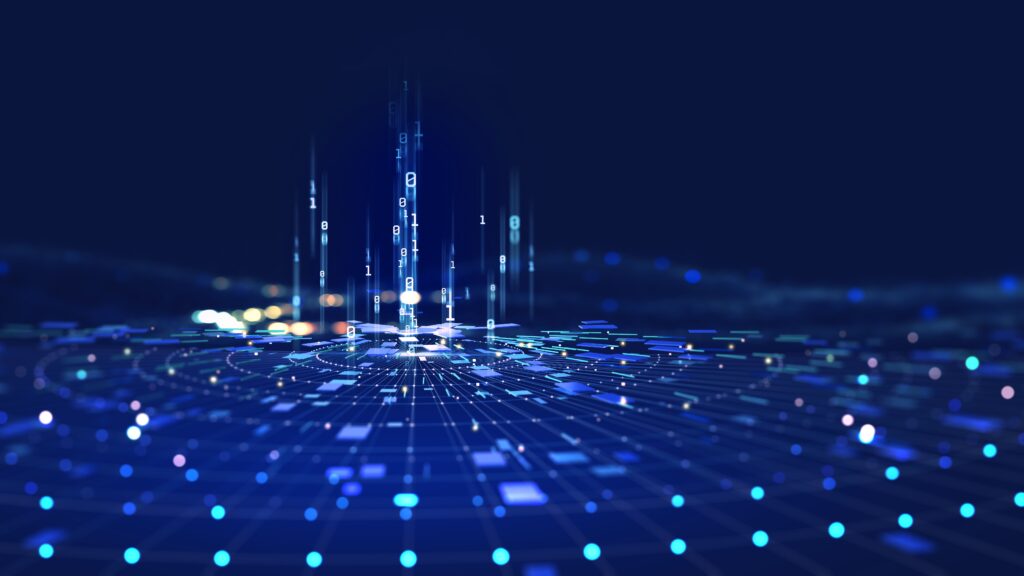This piece is part of AI on the Move, a PAN series that explores the ongoing impacts of artificial intelligence on marketing and PR.
 You’d be hard-pressed to find an industry undergoing change as rapidly as cybersecurity. Defenders and hackers are in a constant game of cat and mouse, where one gets faster and smarter — and then so does the other. And in a digital-first world, the ripple effects of these changes are felt in every other industry.
You’d be hard-pressed to find an industry undergoing change as rapidly as cybersecurity. Defenders and hackers are in a constant game of cat and mouse, where one gets faster and smarter — and then so does the other. And in a digital-first world, the ripple effects of these changes are felt in every other industry.
At PAN, our team of industry experts has kept a close watch on the rapid-fire shift in cybersecurity trends, breaking news and the impact of AI on cybersecurity. Read on to see how we’re navigating the knowns and unknowns of cybersecurity.
The Year in Cybersecurity Trends
Educated Guesses: What We Got (Mostly) Right
Each year cyber experts put their best predictions forth around the cybersecurity landscape, and sometimes, they get it right. Continued remote work paved the way for some expected trends — the human risk factor, for example, is still the top cause of cloud data breaches, according to the 2023 Thales Data Threat Report. And if we learned anything from Solarwinds, third party vulnerabilities are still a critical issue, as evidenced by this year’s MOVEIt zero-day.
Less expected were changes to the regulatory landscape. The Biden Administration set a new precedent for cybersecurity with the release of the 2023 National Cybersecurity Strategy and the accompanying implementation plan. Much of the push for standards and compliance was aimed at securing critical infrastructure, another emerging industry focus as more attacks unveiled their inherent vulnerabilities.
And, of course, hailed by the November 2022 early demo launch of ChatGPT, some of us had an idea that AI was on the cusp of changing cybersecurity (shoutout to Rick Vanover from Veeam in our 2023 Security Straight Talk), though nobody could have predicted just how much.
Knowns: AI Has Rocked the Cybersecurity Landscape
Now that we’re in the thick of the generative AI era, here’s what we know about how the proliferation of this technology is changing cybersecurity. AI has long been in IT’s toolbox, and used as a defensive solution in threat detection and decision-making. Now, generative AI is poised to help security analysts make better sense of large sets of data, and even contribute to a new future of human-machine teaming.
But AI presents a dual opportunity, and hackers are benefiting, too. Generative AI has made way for tools like FraudGPT and WormGPT, which can help develop more realistic phishing emails or draft malicious code. Armed with powerful AI solutions, nearly anyone can very effectively expand their hacking repertoire.
And while we haven’t yet seen every way AI models can be exploited, we know enough to say definitively that they pose a risk. Growing adversarial AI attacks aim to manipulate models directly and alter their data or behaviors. Not to mention, lax company rules can see employees feeding sensitive company data into public generative AI models without a second thought.
AI has long been in IT’s toolbox, and used as a defensive solution in threat detection and decision-making. Now, generative AI is poised to help security analysts make better sense of large sets of data, and even contribute to a new future of human-machine teaming.
These are major considerations for brands looking to integrate AI into their workflows — which should be, well, most brands: according to PAN’s latest Brand Experience Report, 70% of customers expect AI to become a larger part of their interactions with brands in the next five years, and 42% say it improves brand experience.
Unknowns: What This Means for the Future of Cybersecurity
But with as much as we’ve learned about the impacts of AI on cybersecurity in the past year, there are just as many unknowns still floating around the technology — and other hot button issues in the industry.
For example, we can’t predict the next hack during the holiday season, or the next major third party zero day. Same goes for incoming cyberattacks in the ongoing Russia/Ukraine conflict. And we most definitely can’t anticipate what we’ll hear about security in preparation for the upcoming election cycle.
But we can predict how we’ll be talking about these events — and the best way to talk about them, too.
AI has truly brought security to the mainstream, and that’s changed the conversations we’re having entirely. It’s no longer about what cybersecurity means for the enterprise. Now we’re discussing how cyber vulnerabilities affect everyone, and larger ethical implications at play. We’re seeing leaders ask (and answer) new questions. What does this mean for the everyday user? What does this mean for national security? Who’s liable for what, and in what capacity?
Finally, cybersecurity is about everyone
So How Can Brands and Marketers Prepare for Cybersecurity Knowns and Unknowns?
- Get Strategic With Your Messaging: Many other brands are tracking these trends, but none of them can tell the same story as you. A good storytelling strategy evolves alongside your brand and the changing media landscape. Learn more how PAN helps position brands in a crowded market.
- Take a Cross-Functional Approach to Brand Storytelling: The best way to tell a story is to understand where, when and how to tell it — and it takes a good team of storytelling experts to figure that out. See how PAN does it.
- Pair Cohesive Storytelling with Demand Generation: By integrating awareness with tactics, marketers can effectively connect with customers across the entire buyer journey. Learn more about our approach.
Cybersecurity has always been important, but it’s more nuanced now than ever before. Learn more from PAN security about how to get and stay ahead.



